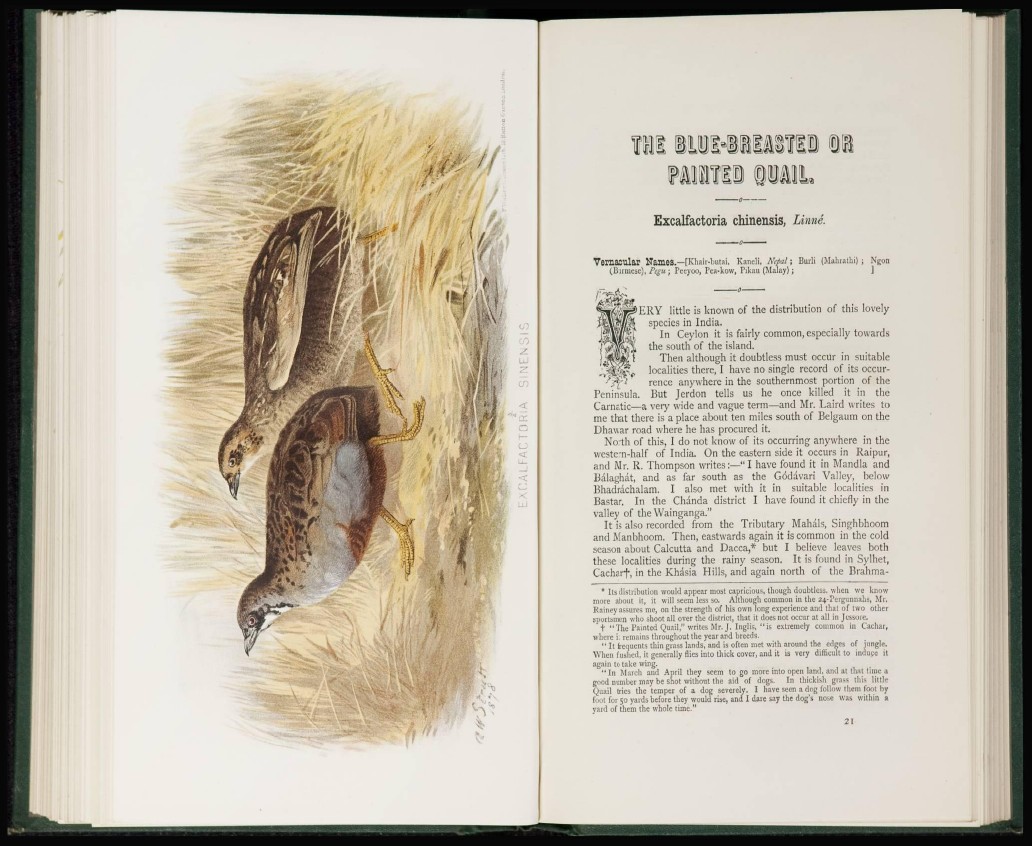
Excalfactoria chinensis, Linne.
Vernacular ITameS.—[Khair-butai, Kaneli, Nepal ; Burli (Mahrathi) ; Ngon
(Burmese), Pegu j Peeyoo, Pea-kow, Pikau (Malay); ]
&ERY little is known of the distribution of this lovelyspecies
Peninsula.
Carnatic-
in India.
In Ceylon it is fairly common, especially towards
the south of the island.
Then although it doubtless must occur in suitable
localities there, I have no single record of its occurrence
anywhere in the southernmost portion of the
But Jerdon tells us he once killed it in the
-a very wide and vague term—and Mr. Laird writes to
me that there is a place about ten miles south of Belgaum on the
Dhawar road where he has procured it.
North of this, I do not know of its occurring anywhere in the
western-half of India. On the eastern side it occurs in Raipur,
and Mr. R. Thompson writes:—"I have found it in Mandla and
Balaghat, and as far south as the Godavari Valley, below
Bhadrachalam. I also met with it in suitable localities in
Bastar. In the Chanda district I have found it chiefly in the
valley of the Wainganga."
It is also recorded from the Tributary Mahals, Singhbhoom
and Manbhoom. Then, eastwards again it is common in the cold
season about Calcutta and Dacca,* but I believe leaves both
these localities during the rainy season. It is found in Sylhet,
Cacharf, in the Khasia Hills, and again north of the Brahma-
* Its distribution would appear most capricious, though doubtless, when we know
more about it, it will seem less so. Although common in the 24-Pergunnahs, Mr.
Rainey assures me, on the strength of his own long experience and thai of two other
sportsmen who shoot all over the district, that it does not occur at all in Jcssore.
+ "The Painted Quail," writes Mr. J. IngHs, "is extremely common in Cachar,
where it remains throughout the year and breeds.
" It frequents thin grass lands, and is often met with around the edges of jungle.
When flushed, it generally flies into thick cover, and it is very difficult to induce it
again to take wing.
" In March and April they seem to go more into open land, and at that time a
good number may be shot without the aid of dogs. In thickish grass this little
Quail tries the temper of a dog severely. I have seen a dog follow them foot by
foot for 50 yards before they would rise, and I daie say the dog'S nose was within a
yard of them the whole time."